Here you go!
scribbler
Stencils/masking is the way more straightforward and normal way to do this!
Sadly I don't know of a way to do that on lemmy. I do have an Instagram (ti.prints) because selling your soul to Zuck seems to be the only way for artists to stand a chance of selling their work :/
Absolutely! So the metal is titanium, and the whole piece is submerged in a dilute electrolyte (baking soda is the MVP here). The entire plate gets charged up to 200V, then I use a pen plotter to bring my pen/cathode (ground) within a few hundred microns of the plate and let the current start flowing. At this point, everything affects the colors you get (temperature of bath, dwell time of cathode, conductivity of bath, spacing between my pen and the plate) because all of these factors affect how thick the anodized layer beneath the pen will be.
The physics of what color you get from a given thickness of anodized material is pretty well characterized already, my shtick is being able to locally control the anodization to make pictures like I've been posting.
Here's a link to a terribly edited YouTube video I put up a few weeks ago on the process: https://youtu.be/xYB1iIjg5u0
And I also have a crude website at https://www.tiprints.com/
Thanks!
Thank you so much! Yes, the color comes from alterations from light reflection. It's difficult to describe, but the changes in color you get from viewing angle aren't as strong as what you get from a soap bubble, but they are definitely there. If you think of the colors you can get from this process in a spectrum, viewing angle can give you about a half step up or half step down. The spectrum runs from: tan, brown, deep blue, light blue, yellow, magenta, light blue again, purple, green, pearl scent.
I've found lighting makes a huge difference though - diffuse lighting like what I have around the house is great. I've got some prints hanging in a gallery that only has spot lights, for those you have to make sure there is a path for the light to bounce off the spotlight into your eyes or the whole print just looks faded and grey.
I'm not a bread enthusiast, but those look amazing!
Assuming you somehow use up your original data cap in... Let's say one incredibly data intensive day somehow. That leaves you with (30 days * 24 hrs/day) * 3600 seconds/hr * 256,000 bps = roughly 660 gigabytes. So I guess that's probably the limit? Plus your original cap.
Feels like the answer must be technically yes, but practically no. Would make a great xkcd "what if."
I have one of these, personally I love not having to pick my hands up off the keyboard. It's like living your whole life in vim!
Hahaha touche - it's at Joshua Tree national park in the US



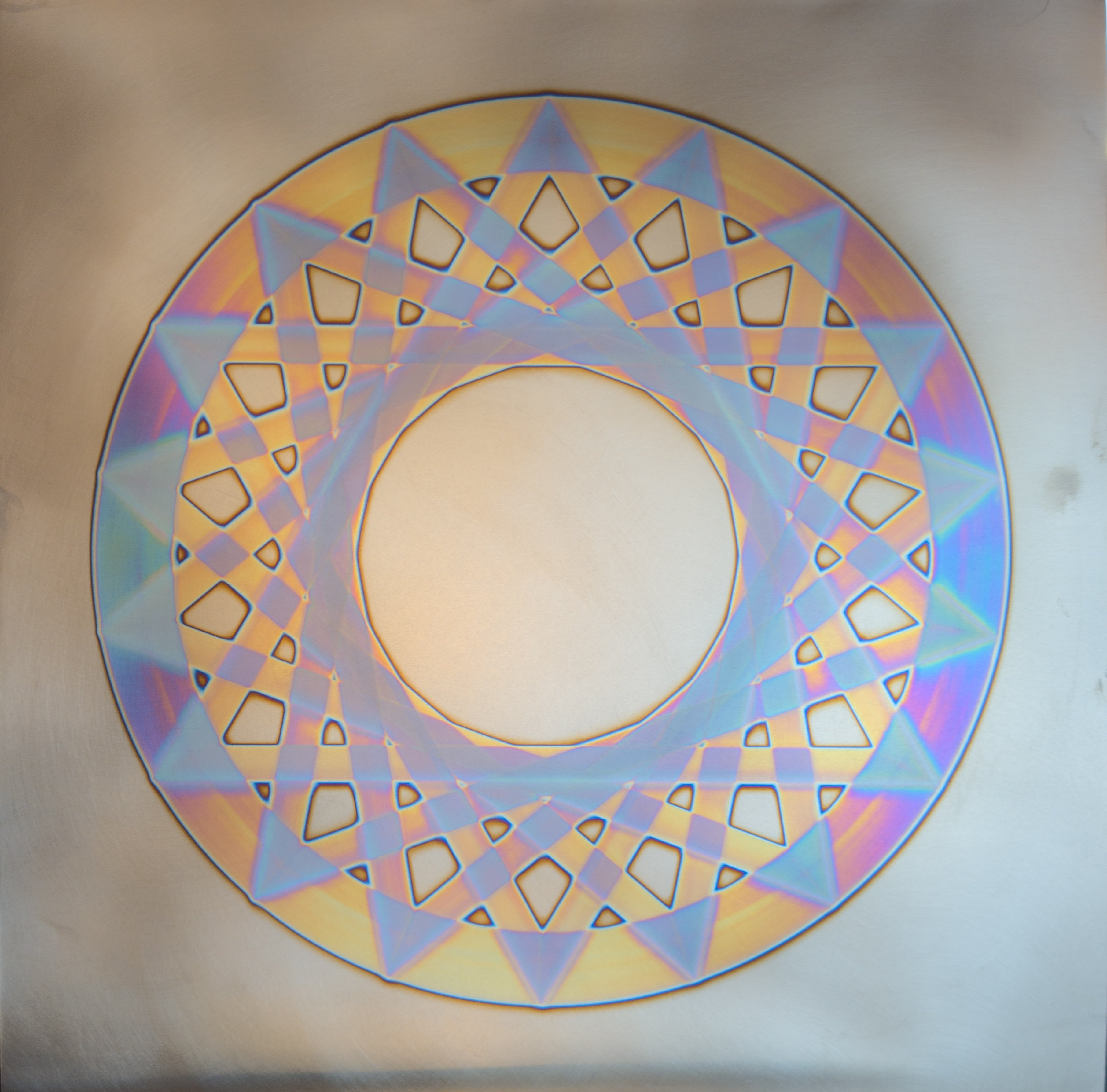
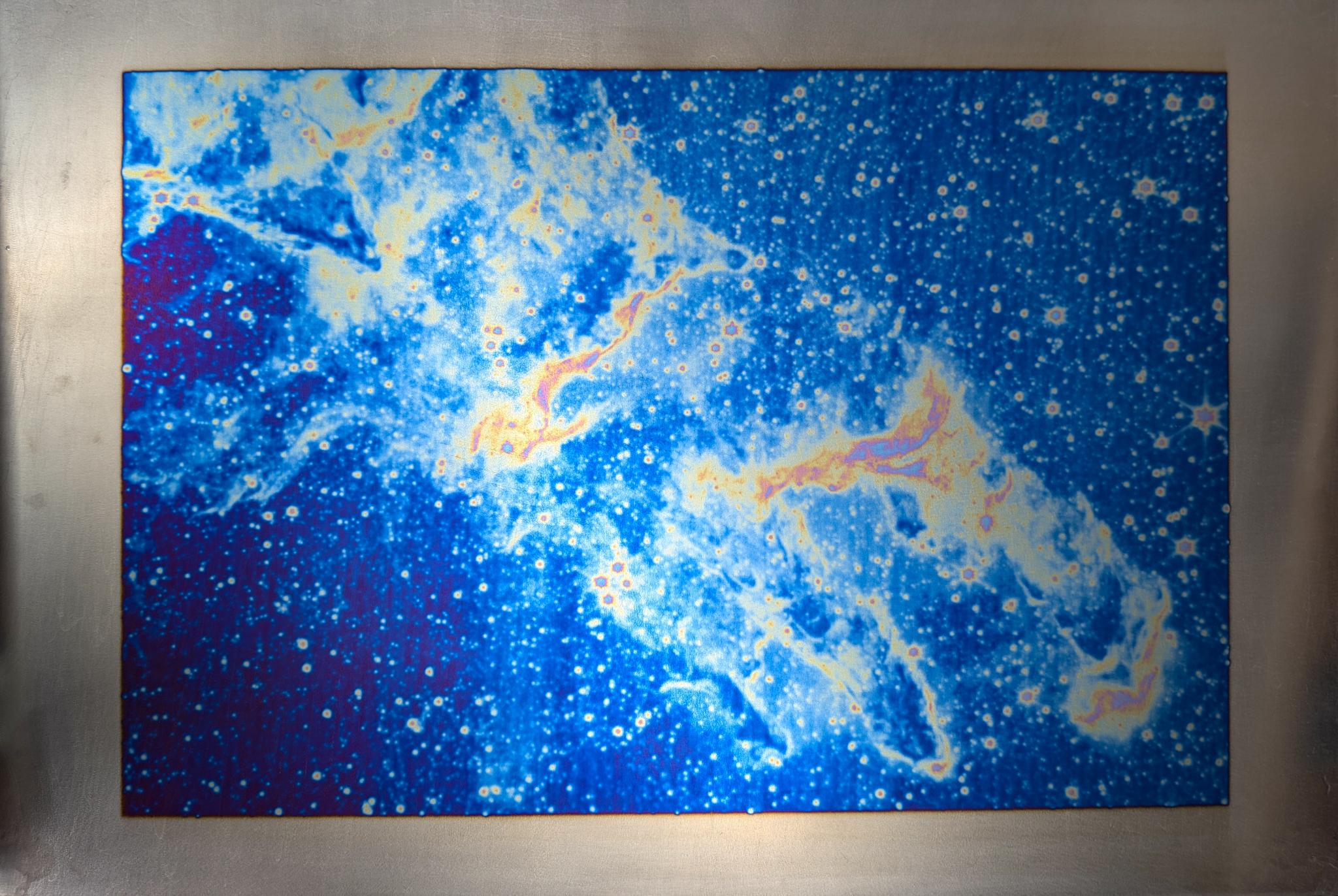
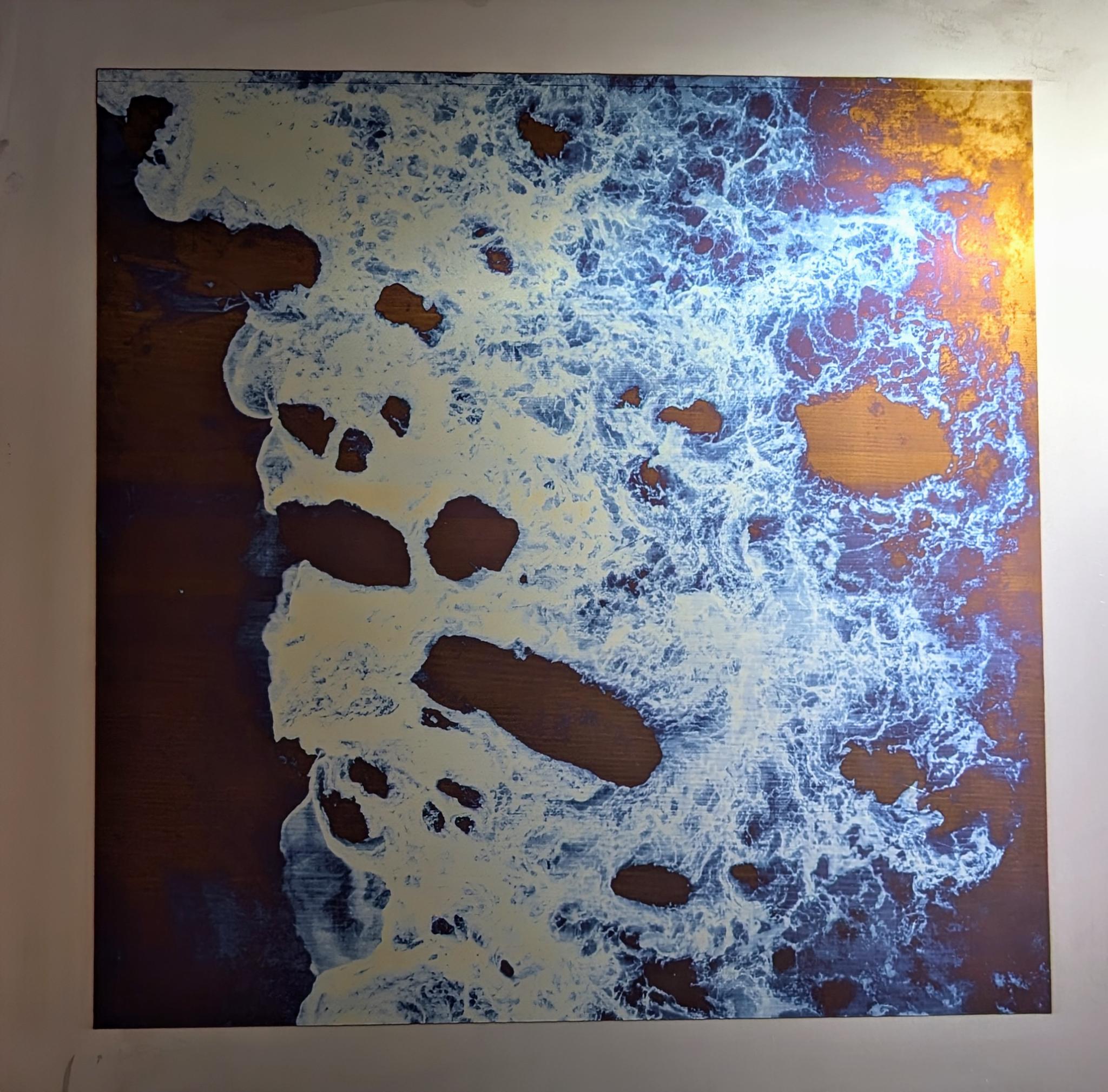
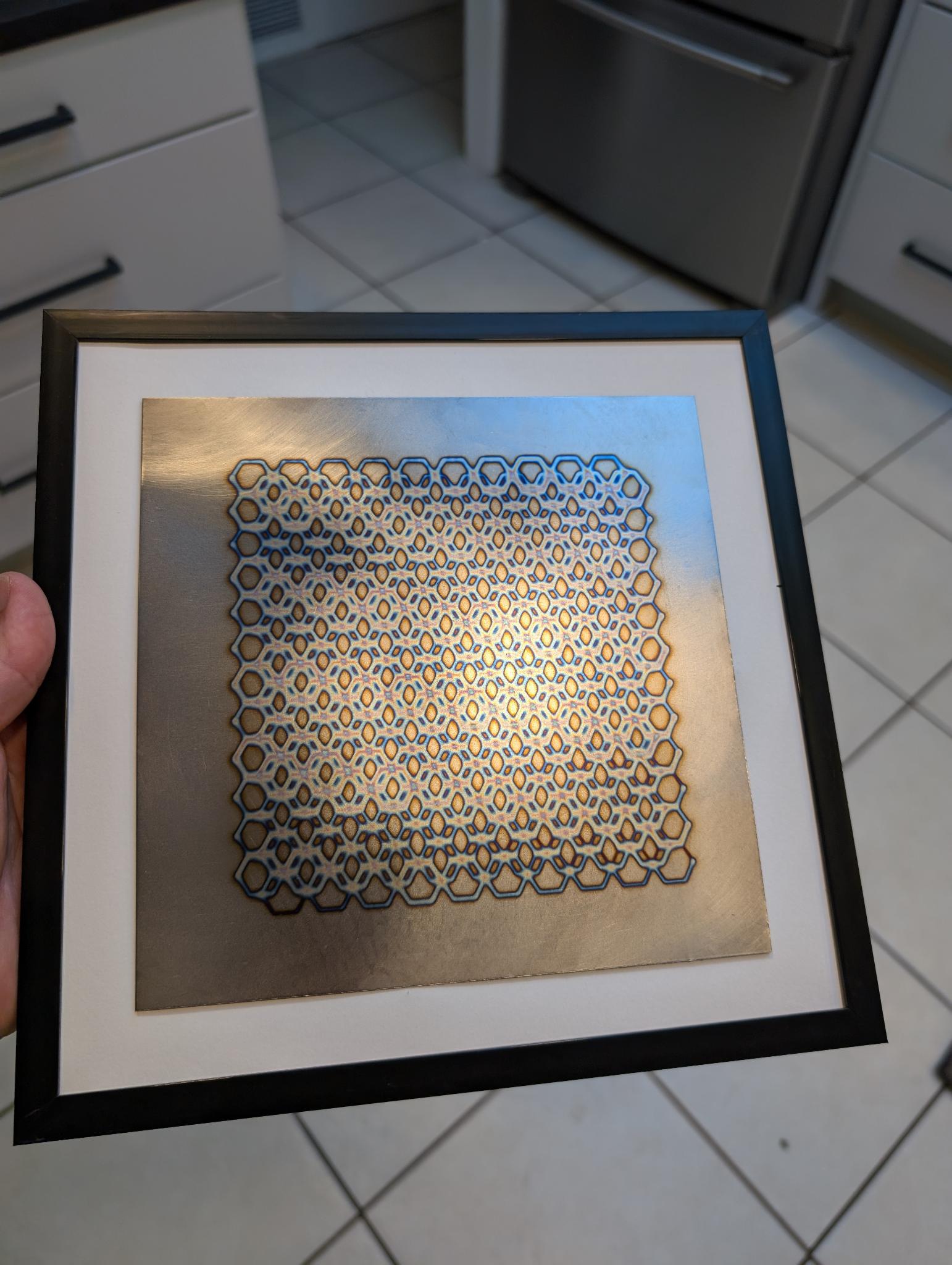
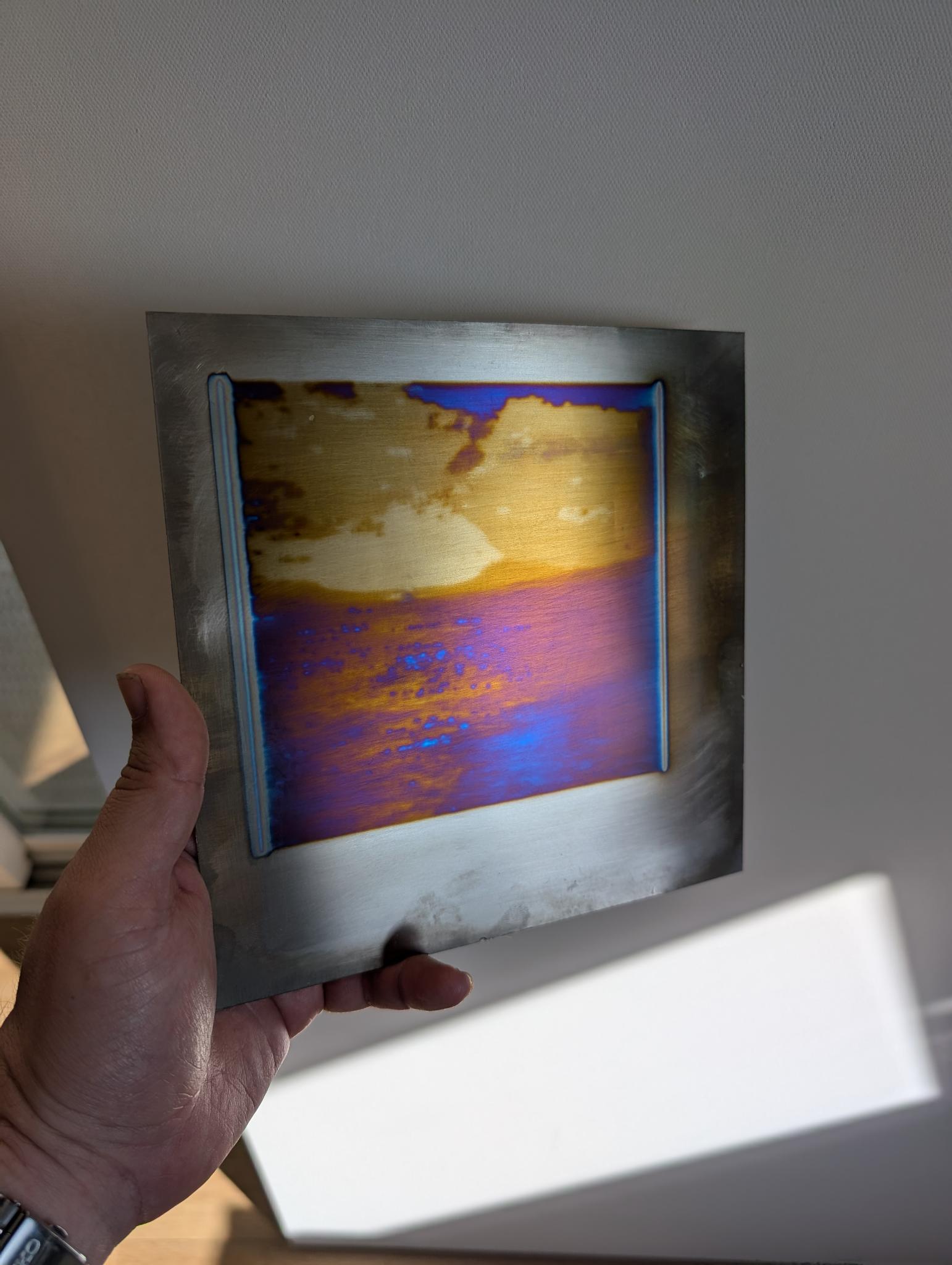
It's anodized titanium - I developed a process to 'draw' the anodization layer. The thickness of the anodization determines what colors you see due to some cool physics of reflection/refraction. I have a lot of fun with it, but the setup I've built is pretty klugey so I probably spend more time improving and maintaining that than I do making prints 😅